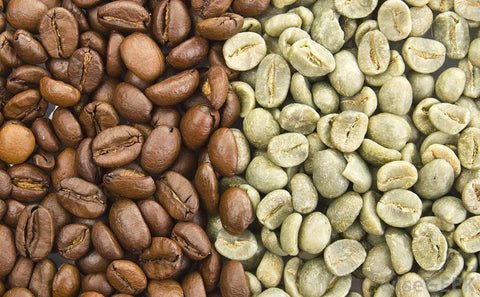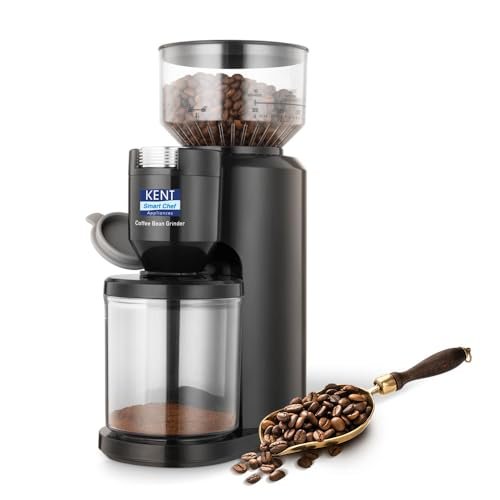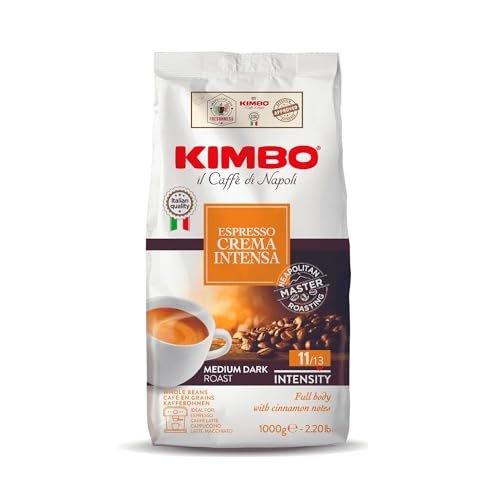Coffee lovers always seek the perfect cup. What if a secret ingredient could enhance your coffee beans?
Imagine starting your day with a richer, more flavorful brew. In the quest for the ideal coffee, enthusiasts often explore various brewing methods, bean origins, and roasting techniques. Yet, there’s a hidden gem that can elevate your coffee experience even further.
This blog reveals a secret ingredient that can transform your regular coffee beans into something extraordinary. Whether you’re a casual drinker or a coffee connoisseur, this tip will surprise and delight you. Ready to discover the magic that awaits in your next cup? Read on to uncover the secret to better coffee beans.

Credit: www.instagram.com
Introduction To Better Coffee Beans
Discover the secret to better coffee beans. Quality beans enhance flavor, aroma, and the overall coffee experience. Explore the world of superior coffee today.
Everyone loves a good cup of coffee. But what makes coffee great? The secret often lies in the quality of the beans. Better coffee beans can transform an ordinary brew into an extraordinary experience. Let’s dive into what makes coffee beans special and how you can choose the best ones for your next cup.Importance Of Quality Beans
Quality beans make a big difference. They affect the taste and aroma of your coffee. Fresh, high-quality beans have rich flavors. They also produce a more enjoyable and consistent cup. On the other hand, poor-quality beans can taste bland or bitter. Investing in good beans is worth it for coffee lovers.Common Coffee Bean Varieties
There are two main types of coffee beans: Arabica and Robusta. Arabica beans are more popular. They have a smooth, sweet taste. They often have notes of fruit or sugar. Robusta beans are stronger and more bitter. They contain more caffeine. They are often used in espresso blends. Knowing the difference can help you choose the right beans for your taste. “`The Role Of Soil And Climate
The secret behind better coffee beans lies in the soil and climate. These factors significantly influence the quality and taste of the coffee. Understanding the role of soil and climate can help you appreciate what makes your coffee unique.
Ideal Growing Conditions
Coffee plants thrive in specific conditions. They need moderate temperatures and consistent rainfall. The best soil for coffee is rich in organic matter and well-drained.
Here are the key factors for ideal growing conditions:
- Temperature: 60-70°F (15-24°C)
- Rainfall: 60-100 inches per year
- Soil: Loamy, rich in organic material
- Sunlight: Partial shade
Impact Of Altitude
Altitude plays a crucial role in coffee bean quality. Higher altitudes create a unique environment for coffee plants.
Here’s how altitude affects coffee:
| Altitude | Impact on Coffee |
|---|---|
| Low (<600 meters) | Sweeter, less acidity |
| Medium (600-1200 meters) | Balanced flavor, moderate acidity |
| High (>1200 meters) | Complex flavor, high acidity |
High altitudes slow the growth of coffee plants. This results in denser beans with more complex flavors.
Harvesting Techniques
Harvesting coffee beans is a crucial step in coffee production. The technique used during harvesting greatly impacts the quality of coffee beans. Two primary methods exist for harvesting coffee beans: selective picking and mechanical harvesting.
Selective Picking
Selective picking involves hand-picking only the ripe coffee cherries. This method ensures that each picked cherry is of the highest quality. Workers carefully select the cherries, leaving unripe ones on the tree. This technique requires skilled labor and attention to detail. It is labor-intensive but results in superior coffee beans.
Mechanical Harvesting
Mechanical harvesting uses machines to shake the coffee trees. The vibrations cause the cherries to fall into collection bins. This method is faster and less labor-intensive than selective picking. It is suitable for large coffee farms with flat terrain. While it is efficient, it may include unripe cherries. This can affect the overall quality of the beans. Farmers often use mechanical harvesting for mass production.

Credit: www.yahoo.com
Processing Methods
Processing methods play a crucial role in determining the flavor and quality of coffee beans. Each method offers unique characteristics to the coffee, influencing everything from its aroma to its acidity. Understanding these methods can help you appreciate the complexity behind your favorite cup of coffee.
Washed Process
The Washed Process, also known as the wet process, involves removing the coffee cherry’s pulp before drying. This method is known for producing a cleaner, brighter cup of coffee. Here’s how it works:
- First, the coffee cherries are harvested and sorted to remove any that are defective.
- Then, the cherries are depulped to remove the skin and pulp.
- The beans are then fermented in water for 12-48 hours to remove the mucilage.
- After fermentation, the beans are thoroughly washed to remove any remaining residues.
- Finally, the beans are dried on raised beds or patios until they reach the desired moisture content.
This process results in a coffee that has a cleaner taste with higher acidity and more pronounced flavors.
Natural Process
The Natural Process, or dry process, is one of the oldest methods of processing coffee. In this method, the entire coffee cherry is dried before the beans are extracted. Here are the steps involved:
- First, ripe coffee cherries are harvested and sorted to remove any that are defective.
- The cherries are then spread out in a thin layer on drying beds or patios.
- They are regularly turned to ensure even drying and to prevent mold.
- Once dried, the dried fruit is mechanically hulled to extract the beans.
- The beans are then further cleaned and sorted before being roasted.
The Natural Process tends to produce a coffee with a fuller body and more intense, fruity flavors. It often has a wine-like complexity and lower acidity compared to the washed process.
Understanding these processing methods can enhance your appreciation for the nuanced flavors in your coffee. Each method brings out different characteristics, making every cup a unique experience.
Roasting Secrets
Roasting coffee beans is an art. It involves precision and technique. The right roast can enhance the flavor of your coffee. Let’s dive into some roasting secrets.
Light Vs. Dark Roast
There are many roast levels, but the most common are light and dark roasts. Each brings out different flavors in the coffee beans.
- Light Roast: These beans are roasted for a shorter time. They have a light brown color. The flavor is more acidic and fruity. The original flavors of the beans shine through.
- Dark Roast: These beans are roasted for a longer time. They have a dark brown color. The flavor is bolder and often bitter. The roasting process adds a smoky taste.
Roasting Time And Temperature
The time and temperature of roasting are crucial. They determine the final flavor of the coffee. Below is a table showing typical roasting times and temperatures:
| Roast Level | Time (Minutes) | Temperature (°F) |
|---|---|---|
| Light Roast | 9-11 | 356-401 |
| Medium Roast | 12-14 | 410-428 |
| Dark Roast | 15-18 | 437-464 |
Roasting times vary based on the desired flavor. Higher temperatures and longer times give a darker roast. Lower temperatures and shorter times give a lighter roast.
Experimenting with different roasting times and temperatures can help you find your perfect cup of coffee. Remember, the goal is to bring out the best flavors in your coffee beans.
Proper Storage Solutions
Proper storage solutions are key to maintaining the freshness of your coffee beans. Fresh coffee tastes better. Proper storage keeps your beans fresh for longer. This section will cover the best ways to store your coffee beans.
Airtight Containers
Airtight containers are essential for storing coffee beans. They prevent air from entering, which keeps the beans fresh. Oxygen is the enemy of fresh coffee beans. Use containers with a tight seal.
Choose containers made from glass or stainless steel. These materials do not affect the flavor of your beans. Plastic containers can sometimes absorb odors. This can change the taste of your coffee.
Optimal Storage Conditions
Store your coffee beans in a cool, dark place. Heat, light, and moisture can damage the beans. A pantry or cupboard is a good place.
Avoid storing your beans in the fridge or freezer. The temperature changes can cause condensation. This can lead to stale beans. Keep your beans at room temperature instead.
Only grind your beans right before brewing. Whole beans stay fresh longer. Pre-ground coffee loses its flavor quicker.
Brewing Techniques
When it comes to making a perfect cup of coffee, the secret ingredient is the brewing technique. Different methods can bring out unique flavors from your coffee beans. Below, we explore two popular brewing techniques: French Press and Espresso.
French Press
The French Press is a classic method that delivers a rich and full-bodied cup. It’s simple and doesn’t require electricity.
Here’s how you can brew with a French Press:
- Boil water to about 200°F (93°C).
- Grind coffee beans to a coarse consistency.
- Place the ground coffee in the French Press.
- Pour hot water over the coffee grounds.
- Stir gently and let it steep for 4 minutes.
- Press the plunger down slowly and serve.
This method allows oils and fine particles to remain in the coffee, enhancing the flavor.
Espresso
For a strong and concentrated coffee, the Espresso method is ideal. It’s quick and creates a bold flavor.
Follow these steps to make espresso:
- Use finely ground coffee beans.
- Pack the coffee grounds into the portafilter firmly.
- Attach the portafilter to the espresso machine.
- Start the machine to apply pressure.
- Extract the coffee for about 25-30 seconds.
Espresso is the base for many coffee drinks like lattes and cappuccinos.
Both methods highlight the quality of your coffee beans, ensuring a delightful experience.
The Ultimate Flavor Unlock
Everyone craves the perfect cup of coffee. But what if there was a way to make your coffee even better? Enter the secret ingredient that unlocks the ultimate flavor in your coffee beans. This simple addition can transform your morning brew into a delightful experience.
Secret Ingredient Revealed
The secret ingredient is cinnamon. A small amount can make a big difference. Cinnamon adds a warm, spicy note to your coffee. It enhances the natural flavors of the beans and gives a unique taste.
How To Use It
Adding cinnamon to your coffee is easy. Here are a few ways:
- Sprinkle a pinch of ground cinnamon into your coffee grounds before brewing.
- Add a cinnamon stick to your coffee pot while brewing.
- Mix a little ground cinnamon into your cup of coffee.
Use a small amount at first. You can always add more if you like a stronger taste. The table below shows different methods and their benefits.
| Method | Benefits |
|---|---|
| Ground Cinnamon in Coffee Grounds | Infuses flavor evenly |
| Cinnamon Stick in Coffee Pot | Mild, consistent flavor |
| Ground Cinnamon in Coffee Cup | Quick and easy |
Experiment with these methods to find what works best for you. Enjoy the enhanced flavors and the delightful aroma of your coffee.

Credit: www.accuweather.com
Frequently Asked Questions
What Is The Secret Ingredient For Better Coffee Beans?
The secret ingredient is often a unique blend of nutrients. These are added during the growing process. They enhance flavor and aroma.
How Do Nutrients Improve Coffee Beans?
Nutrients enrich the soil, leading to healthier plants. Healthier plants produce better beans. This results in richer flavor and aroma.
Can I Grow Better Coffee Beans At Home?
Yes, you can. Use high-quality soil and add essential nutrients. Pay attention to light and water needs.
What Nutrients Are Essential For Coffee Beans?
Key nutrients include nitrogen, potassium, and magnesium. These promote healthy growth and improve bean quality. Balanced soil is crucial.
Conclusion
Discovering the secret ingredient can transform your coffee experience. Freshness and quality matter most. Choose beans wisely and store them properly. Grind just before brewing. Experiment with different roasts and origins. Enjoy the rich flavors and aromas. Savor each sip.
Perfect coffee is within reach. Happy brewing!






